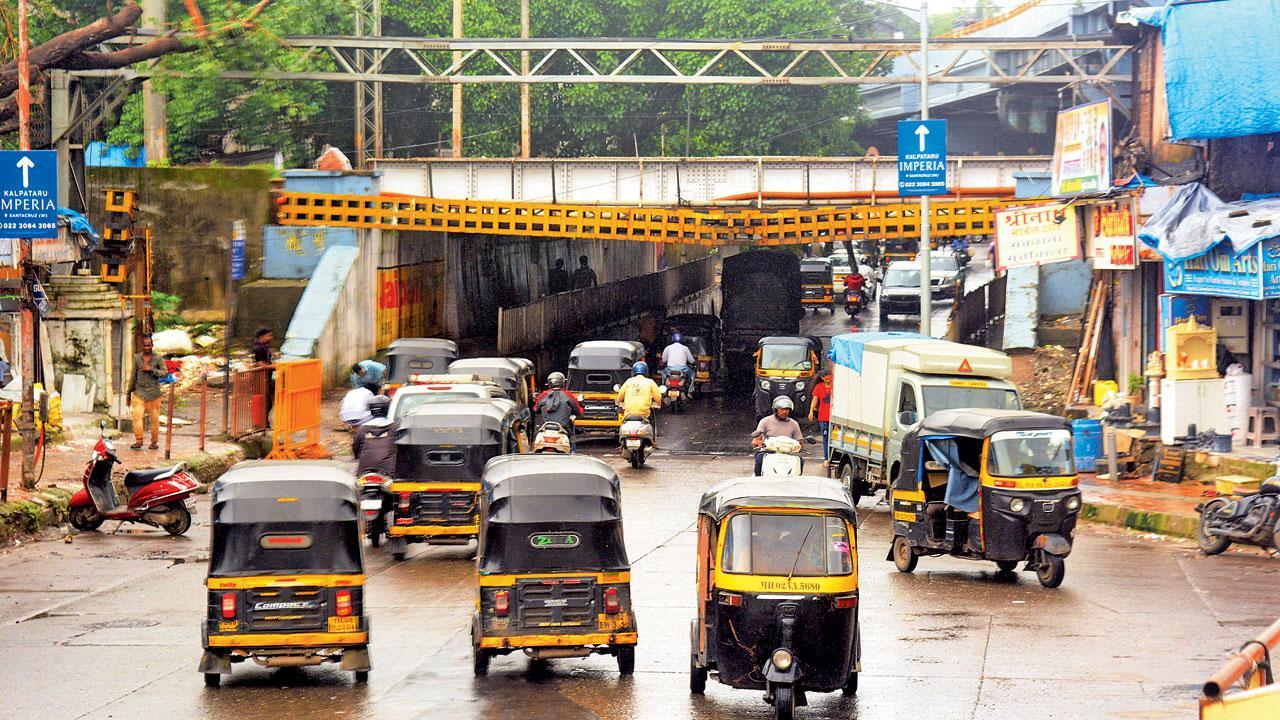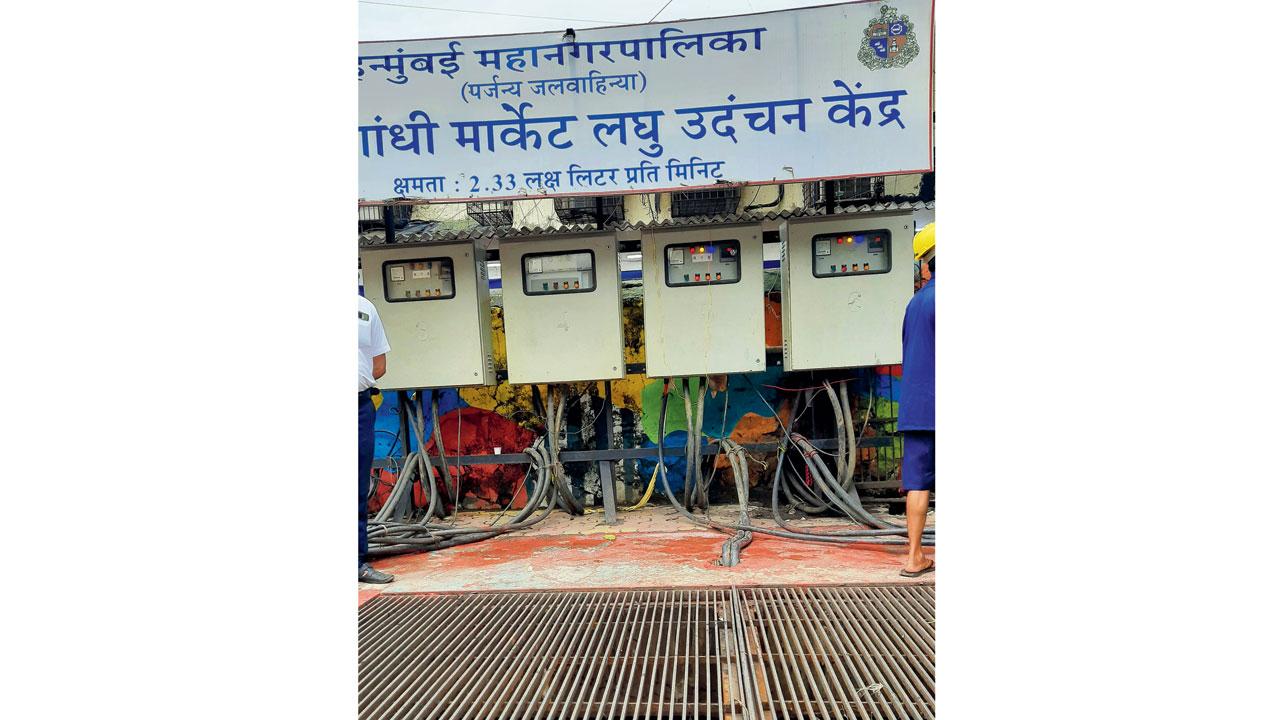860 mn litres of water pumped out at sites with new methods; Rs 155 cr spent to drain Hindmata

The system at Milan subway pumped out 152 million litres of water from August to September. File pic
New techniques used at three of the city's chronic flooding spots, Hindmata, Gandhi Market and Milan Subway, have yielded results this monsoon. Though similar amounts of water were pumped out into nullahs amid heavy rainfall at Hindmata and Gandhi Market—336 million litres and 375 million litres respectively—from June to September, the BMC had to spend Rs 155 crore to keep the former spot flood-free as opposed to Rs 20 crore—almost one-eight of the amount—to drain Gandhi Market.
This is due to the fact that the civic body had to construct three huge underground storage tanks in two open spaces in Hindmata because it could not increase the capacity of the existing man-made drainage system there. Flooding at Gandhi Market, on the other hand, could be resolved with a mini-pumping station with high-capacity pumps.
Also read: Mumbai: BMC installs 25 rainwater detection meters to measure flood lines

The underground tanks that were set up to bring relief to Hindmata
During heavy spells, the system at Milan subway pumped out 152 million litres of water from August to September. The BMC has spent more than Rs 200 crore to reduce flooding at all three sites while a Rs 100-crore project at Andheri Subway, another flooding spot, is in the pipeline.
The BMC had earlier tried to increase the capacity of the drainage system at Parel, Lalbaug and Byculla and had also constructed the Britannia pumping station near Reay Road to ease the problem at Hindmata. But these solutions failed to yield results and heavy spells would leave the area flooded. Finally, the holding tank idea came to be implemented two years ago. “Now, we are adding more pumps and drains on both sides of the road. It will help to pump out more water into the two tanks at St Xavier’s Ground during heavy rainfall. The tank at Pramod Mahajan Park will be functional next month,” said Ashok Mistri, head of the stormwater department.
Mistri added that each area requires different techniques and it is not justified to say that one needed more funds than the other. “At Gandhi Market, the Bharat Nagar culvert is nearby which can carry huge amounts of water during high tide. But at Hindmata, no such drain is there and there are limitations to increasing the capacity of the current system, so we had to construct a huge tank to collect water, which increased the cost.”

The mini-pumping station at Gandhi Market
Gandhi Market
The BMC has set up a mini pumping station with four high-capacity pumps to disperse water into the Bharat Nagar culvert.
Ongoing work
One more high-capacity pump will be added.
Project cost
The corporation has spent
Rs 20 crore on the project
Rs 8 cr for construction
Rs 12 crore for four-year maintenance.
Water pumped out 375.5 million litres.
Milan Subway
The BMC constructed a holding pond with a capacity of 2 crore litres. The pond is supposed to hold water accumulated at the subway during heavy rain. After the rain subsides, this water is released into the drain. The pond wasn’t ready in July and flooding occurred in the subway on two occasions. But it was completed by the end of July.
Ongoing work
The construction of a slab to close the holding pond will start after the monsoon.
Cost of the project
Rs 33 crore
Water drained
152.59 million litres
200,00,00,000
Amt in Rs spent to keep three chronic flooding spots dry
Hindmata
The BMC has constructed three tanks, one at Pramod Mahajan Kala Park in Dadar West and two at St Xavier’s Ground in Parel. The combined capacity of the three tanks is 4.5 crore litres.
Ongoing work
BMC will install another four pumps in addition to the existing nine and additional drains on both sides of Dr Ambedkar road worth R15 crore to pump out water into the tanks at St Xavier’s Ground. The construction of a 2-crore-litre-capacity tank at Pramod Mahajan Kala Park, which costs R30 crore, is in pipeline.
Project cost
Rs 155 crore
Water pumped out
336.04 million litres
 Subscribe today by clicking the link and stay updated with the latest news!" Click here!
Subscribe today by clicking the link and stay updated with the latest news!" Click here!










